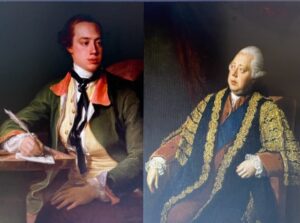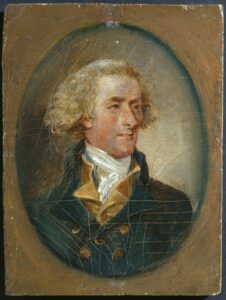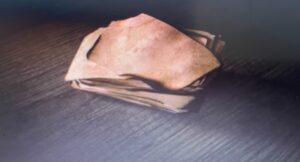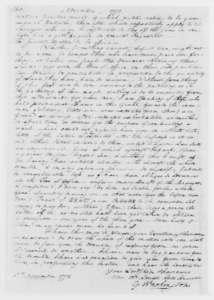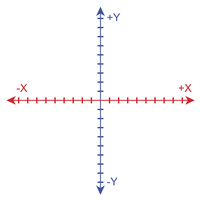Americanism Redux
April 13, on the journey to the American Founding, 250 years ago today, in 1773
“Happy Birthday to you. Happy Birthday to you. Happy Birthday, dear name-goes-here, Happy Birthday to you…”
They finish the crooning.
Or maybe shouts of “for he’s a jolly good fellow, for he’s a jolly good fellow, for he’s a jolly good fellow…”
They stretch out that last note.
If not either of these then let’s do a quiet dinner with candlelight, chosen foods, and a favorite companion.
(the big day)
What’s your birthday wish?
250 years ago today, and it’s that special day for 40-turning 41-year old Lord North in London, England. His eyes seem large for his face and his face seems large for his body. Gray hair covers his head, leaving no trace of the reddish color so vivid twenty years ago. A ramrod straight posture has worn down to a slight stoop and bend.
You know him from before as King George III’s Prime Minister of Parliament. Millions of people will be affected by this man. He’ll decide and choose for himself on many things, seek to manage and oversee on many other things, fail to prevent or reverse in still more things. And sometimes all three at the same time. Likely it’s the blurriness of the three together—things he controls, things he has partial control of, things he will never control—that accounts for the change in North’s appearance on this first day of his 41st year.
(the two Norths)
Other side of the Atlantic Ocean and another birthday celebration occurs today, 250 years ago. It’s Thomas Jefferson’s special day as he is 29-turning-30-years old. Red-headed, too. Straight-backed. Tall. Eyes known less for size and more for sparkle.
(Jefferson)
He’s one of the younger members of the Virginia colonial legislature. He affects hundreds of people right now, some enslaved by him, some committed to him as voters, a few collaborating with him as co-legislators and co-participants in the colonial rights movement. One day, slightly more than three years from now, those hundreds of people will become thousands in the heat of crisis, then millions as the decades fly, and then, centuries on, billions, all drawn by words he’ll craft into a declarative document and against which both he and the people around him will be:
“and many more…” goes the song.
Evaluated.
“and so say all of us…” goes the chant.
Assessed.
“on your day, dear…” goes the soft voice.
Judged.
Also
Today, 250 years ago, as birthdays come and go, Samuel Adams reads documents from four towns in Massachusetts. Each—Duxborough, Weymouth, Gardnerstown, and Framingham—has convened town meetings for the writing and endorsement of statements in support of the Committees of Correspondence and the colonial rights movement. Four statements documented from four towns all arrive to Adams in Boston on the same day, today. A marvelous thing to behold. The fuse lit six months ago in the imperial-colonial dispute with Massachusetts Royal Governor Thomas Hutchinson burns brightly in the four documents held today by Samuel Adams.
(document stack)
George Washington finishes writing a personal document to another royal governor, in his case, Lord Dunmore of Virginia. Washington uses warmth and friendliness in his letter to Dunmore. He informs the governor that he’s traveling to New York City to enroll his son-in-law in King’s College (Columbia University). He volunteers to carry any letters or packages Dunmore needs sent to the vicinity of New York City. Washington also expresses hope that he and Dunmore can travel together to Fort Pitt in western Pennsylvania in a few months. They’ll inspect lands that Washington either owns or to which Virginia is claiming to own. Washington suggests that for their future trip they use a “woodsman” and a Native as guides through the rugged terrain near the headwaters of the Ohio River. Washington’s letter to Dunmore is a model of interaction between British governor and British colonist. Any light in this letter is from the glow of respect and collegiality.
(single document)
For You Now
We have four people today, 250 years ago. They break down into two pairs. One is a birthday pair. One is a parchment pair. Each pair is a sort of line segment with two ends. They cross and in so doing, form an axis.
North and Jefferson don’t know that their futures will root and bolt them on opposing sides. North holds a position of more visible power and authority. Jefferson occupies a less exalted place, until, that is, he agrees to take on a particular challenge as a writer and, more specifically, a public writer in a critical moment. Even then Jefferson’s place will require a long and complex passage of time before the rise he receives will find its true heights.
Washington and Dunmore know each other well and know where each other stands. They aren’t equal in position or place but they are within touching distance of each other. In some ways, in individual economics, for example, the inequality is much more pronounced with Washington’s wealth far exceeding that of Dunmore. Washington’s network of personal and professional contacts likely has more vibrancy than Dunmore’s as well—the governor depends on his office and official role while the colonist relies on his reputation and mutual interactions. They have no reason to expect an abrupt shift in their connection.
But your mind might be tricking you. Actually, the parchment pair isn’t Washington and Dunmore. No, it’s Washington and Adams that form the opposites here. Both Washington and Adams have parchment paper in their hands today—one is the writer and sender and the other is the reader and recipient. The question for them will be what the pair of parchment papers represents. Which feels and reads like energy? Which feels and reads like action and motion? Which feels and reads like the stuff of sustainment and durability? Which feels and reads like it’s about to be discarded? Which feels and reads like it needs to be kept nearby?
A pair of this and a pair of that on a line running here and another line running there. The lines intersect and make an axis. And along the axis, you can begin to plot…(what?).
Suggestion
Two considerations. Consider a pair of things in the American nation that, for you right now, stand as opposites. What does the pair represent? Now, consider a second pair of opposites. You’ve just made your axis and it might be important in the time ahead.

